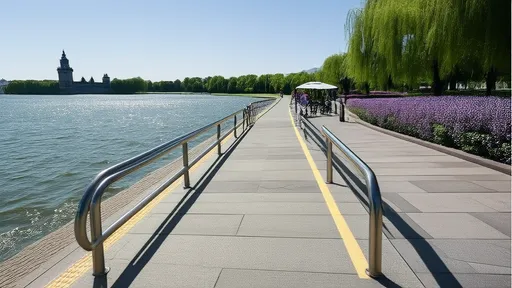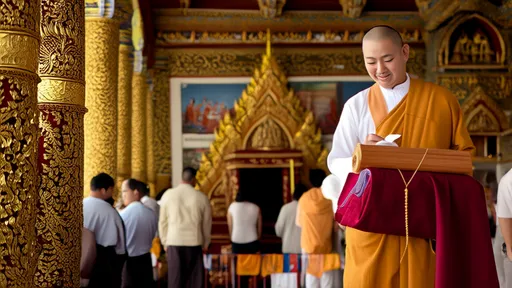Visiting Thailand's magnificent temples is a highlight for many travelers, offering a glimpse into the country's rich spiritual and cultural heritage. However, dressing appropriately is not just a matter of respect—it's often a strict requirement. For those who don't pack suitable attire, renting a traditional wrap-around cloth, or sarong, at the temple entrance is a common solution. While this seems convenient, there are several pitfalls travelers should be aware of to avoid discomfort, overpaying, or even cultural faux pas.
The first thing to note is that not all rental sarongs are created equal. Near popular temples like Wat Phra Kaew or Wat Arun, vendors often charge inflated prices, especially to unsuspecting tourists. Some may even claim that the temple requires a "premium" wrap, which is rarely true. A standard sarong rental should cost no more than 20-50 THB, and in many smaller temples, they are provided free of charge with a small donation. Be wary of anyone insisting on a higher fee—politely decline and check with temple staff if necessary.
Another issue is hygiene. While most rental sarongs are washed regularly, some may not meet Western standards of cleanliness. If you have sensitive skin or simply prefer to avoid shared clothing, bringing your own lightweight scarf or sarong is a safer bet. Many travelers opt for a quick-dry, foldable wrap that can easily fit in a day bag. This not only ensures hygiene but also saves time waiting in line at crowded temples.
Beyond pricing and cleanliness, the way you wear the sarong matters. Temple staff or vendors may assist in wrapping it correctly, but improper draping can lead to embarrassing mishaps—especially when climbing stairs or sitting on the floor during ceremonies. A well-secured sarong should cover the knees completely and stay firmly in place. Some vendors offer safety pins or clips for an additional fee, but these are often unnecessary if the cloth is wrapped tightly enough.
Lastly, be mindful of the cultural significance behind the dress code. While renting a sarong is a practical solution, understanding why it's required shows deeper respect. In Thai Buddhism, modest dress signifies reverence for the sacred space. Wearing revealing clothing, even if covered by a rented sarong, can still draw disapproving looks from locals. When in doubt, observe how Thai visitors dress and follow their lead.
For those planning multiple temple visits, investing in a personal sarong is a smart choice. Not only does it eliminate rental hassles, but it also serves as a versatile travel item—usable as a beach cover-up, picnic blanket, or even an emergency towel. Markets like Chatuchak in Bangkok or Warorot in Chiang Mai offer affordable, high-quality options with beautiful traditional patterns.
Ultimately, while sarong rentals provide a quick fix for temple visits, being informed helps avoid common traps. With a little preparation, travelers can focus on the spiritual and architectural wonders of Thailand's temples without distractions. After all, the goal is to immerse oneself in the experience—not fret over wardrobe malfunctions or tourist scams.

By /Jul 25, 2025

By /Jul 25, 2025

By /Jul 25, 2025

By /Jul 25, 2025

By /Jul 25, 2025

By /Jul 25, 2025

By /Jul 25, 2025

By /Jul 25, 2025

By /Jul 25, 2025

By /Jul 25, 2025

By /Jul 25, 2025

By /Jul 25, 2025

By /Jul 25, 2025

By /Jul 25, 2025

By /Jul 25, 2025

By /Jul 25, 2025

By /Jul 25, 2025

By /Jul 25, 2025

By /Jul 25, 2025

By /Jul 25, 2025